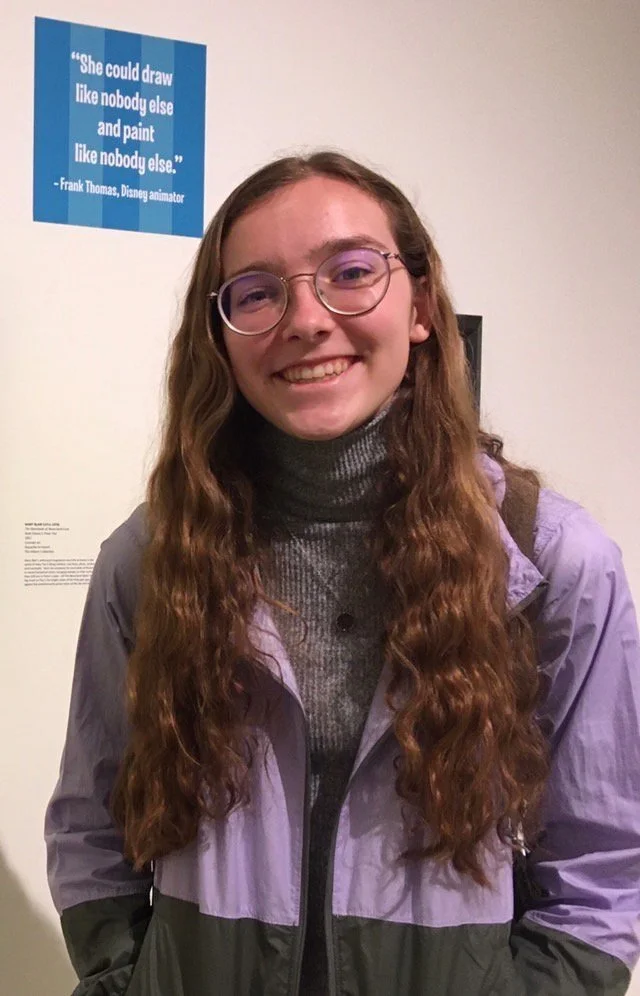Opinion | How Wes Anderson’s filmography accompanied me through a pandemic
In 2010, my mom rented “Fantastic Mr. Fox” from RedBox for family movie night, assuming, as an animated movie, surely its target audience must be some elementary schoolers on summer vacation.
Emma Patterson, junior animation major
Long story short: she hated it, but I was in awe. Flash forward almost a decade, and I find myself uncomfortably straddling an art horse in a figure drawing class at Chapman’s Digital Media Arts Center, trying to figure out if this whole animation major thing is going to work out for me.
In a game of “name something that would get your animation card revoked,” I would have too many options. When it comes to watching movies and television, I’ve always been drawn more toward live action (apparently the rest of Dodge finds it hilarious that we even call it that?).
Despite never seeing “Avatar: The Last Airbender” or even “Spirited Away,” the name that kept coming up in conversation my freshman year was Wes Anderson. I assume virtually every upperclassman Dodge student remembers their social media feed being inundated with imagery from the trailer for “The French Dispatch” when it dropped on Feb. 12, 2020, just over a month before a global pandemic sent us all home.
In the middle of 2020, I had no intention of watching all of Anderson’s movies in anticipation of the eventual release of his next film. While I gave “Fantastic Mr. Fox” another shot on July 8, 2020 (yes, I am referencing my Letterboxd diary for this), it wasn’t until December that my family of now-adult children enthusiastically joined me in our second ever Anderson movie night with “The Grand Budapest Hotel.”
After viewing two more of Anderson’s films before the start of interterm, I made it my goal to see his entire filmography in time to be seated in a movie theater on opening night of “The French Dispatch.” There was no solid plan to this, meaning I would go months without watching any films, and then I’d see two in a single week.
Although I didn’t put much thought into the order in which I watched Anderson’s wide array of films, my personal favorite, “The Life Aquatic with Steve Zissou,” serendipitously landed squarely in the middle of my marathon.
There seems to be very little rhyme or reason statistically for which Anderson films are my favorites 一 no correlation with release date, script collaborators or average Letterboxd rating. With “Isle of Dogs,” “Moonrise Kingdom,” and “Rushmore” falling into the bottom three spots, I thought to myself 一 maybe I just hate kids? Nonetheless, it’s nearly impossible to put my finger on why I feel such a strong emotional connection to all of these films.
There was something intangibly comforting about entering a world of arguably too much yellow every so often. Anderson’s films may offer an escapist fantasy 一 something I craved over the course of the last year 一 but they also don’t shy away from the harsh realities of death, disillusionment and broken relationships.
The camera angles are flat, the dialogue is unnatural and a blank expression with a single tear can often be as emotional as it gets. And yet, I still find myself crying over Anderson’s characters.
“No crying” is a sentiment repeated throughout Anderson’s latest film. But when a needle drop hits you across the face with the fragility of life in “The Darjeeling Limited” or “The Royal Tenenbaums,” how could you not? His style begs of you, “no crying”, but his writing puts you to the test. It taunts you; surely a stop motion shark won’t make you feel more emotions than you have since March 2020.
But it will. And on opening night, overwhelmed and awestruck at the cinematography and sounds of Anderson’s newest film enveloping me in a dark theater for the first time, I couldn’t help but tear up more than once at a film which continuously urged, “no crying.”

